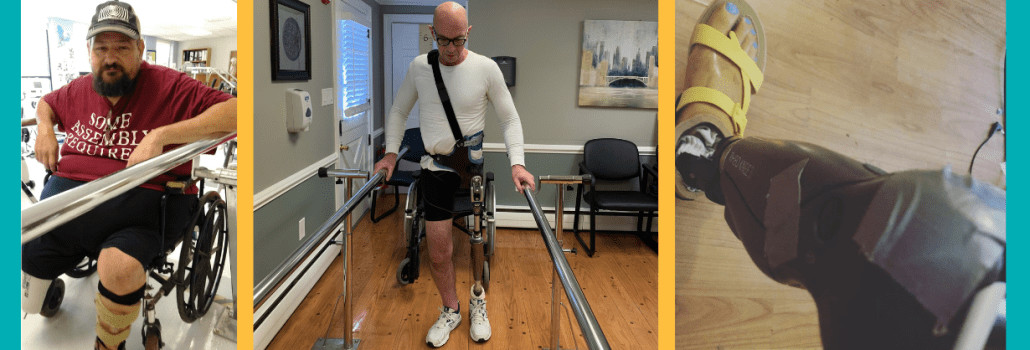
MobilityWorks
Accessibility for all: Helping people connect with who and what matters most
Searching...
No results found. Please try modifying your search.
Find financial assistance for amputees with our medical fundraising platform.
An amputation may cost between $20,000 and $500,000 depending on insurance coverage, lifetime needs, and other specifics. In this post, you’ll learn what to expect throughout the amputation process and how to find financial assistance for amputees.
The cost of amputation treatment can vary depending on a number of factors, including the type of amputation, the location of the amputation, the patient’s overall health, and the hospital or surgery center where the amputation is performed.
On average, the total lifetime costs for amputation patients are over $500,000, according to a 2009 study. Even with insurance, patients may incur out-of-pocket costs related to the amputation.
Depending on the type of amputation, surgery and healing expenses will vary. For example, when comparing a foot amputation cost to an above-knee amputation cost, there is a difference of about $20,000.
The expenses associated with leg amputation can significantly differ based on various factors such as the type of health insurance, the medical facility, and the intricacy of the surgery. On average, the cost of a leg amputation typically falls within the range of $5,000 to $60,000.
Long-term medical expenses for amputation are estimated at $100,000 to $500,000, a range that depends on the limb removed and the type of rehabilitation and recovery that a patient needs.
Out-of-pocket expenses for amputation can vary and contribute to the overall financial burden of the procedure. Patients undergoing amputation may encounter costs that are not covered by insurance, such as assistive devices, rehabilitation services, and home modifications.
These expenses can quickly add up and pose a significant challenge to those navigating life after amputation.
Other out-of-pocket costs may include:
Insurance coverage for amputation costs, including Medicare and Medicaid, can vary depending on the specific policy and provider. In general, insurance plans typically cover a portion of the expenses associated with amputation, such as hospital stays, surgical procedures, and post-operative care. However, coverage may not extend to all related costs, such as rehabilitation services, prosthetic devices, and ongoing medical needs.
Although the medical expenses associated with amputation procedures, rehabilitation funding for prosthetics, and long-term health care will vary depending on the situation, the expenses can add up quickly. Help Hope Live is your community-based fundraising source to provide financial assistance for amputees for treatment, physical therapy, rehabilitation services, and other associated costs.
Fundraising can help you cover amputation-related expenses including:
Through community-based fundraising, our nonprofit organization is dedicated to helping you raise funds for the medical expenses associated with surgery or ongoing support for an amputation. If you are seeking financial assistance or grants for amputation, Help Hope Live may be able to provide the resources and support you need to help offset medical expenses.
Fundraising with our nonprofit works as follows:
Help Hope Live differs from GoFundMe by:
We are a nonprofit organization with more than 30 years of fundraising experience and a 4-star Charity Navigator rating.
Here are a few Help Hope Live fundraising success stories:

Kristoffer Kristensen experienced a left pelvis, leg, and hip amputation due to a rare bone cancer diagnosis. He lost his job, his mobility, and his independence. Kristoffer turned to Help Hope Live to help fuel a brighter and more mobile future. He has raised over $10,600 with Help Hope Live so far with one-on-one fundraising help at every stage of his journey, including event planning help, successful press outreach in his community, and customized fundraising materials. He posts regular video Updates on his Campaign Page to keep his community engaged.
Carolanne Mitchell was frustrated to learn that her insurance would only cover part of the cost of a piece of medical equipment she desperately needed: a new prosthetic leg. To stay mobile and continue working and engaging with her community, she would need to cover $6,700 out-of-pocket. She turned to Help Hope Live for trusted medical fundraising. Carolanne exceeded her goal, raising over $7,200 to help with funding for a prosthetic replacement.
If you choose to fundraise with our nonprofit, here’s how the process will look:
1. APPLY for assistance
2. YOU’LL BE PAIRED with a Client Services Coordinator
3. YOUR COORDINATOR will provide you with one-on-one fundraising help, including personalized fundraising materials and guidance on how to rally your community, share your story on social media, reach out to the press, plan in-person or virtual fundraising events, and more.
Need Other Financial Help Options?
For alternatives to fundraising, you can find information on a variety of financial assistance options for amputation expenses in our Resource Directory for catastrophic injury patients, family members, and caregivers.